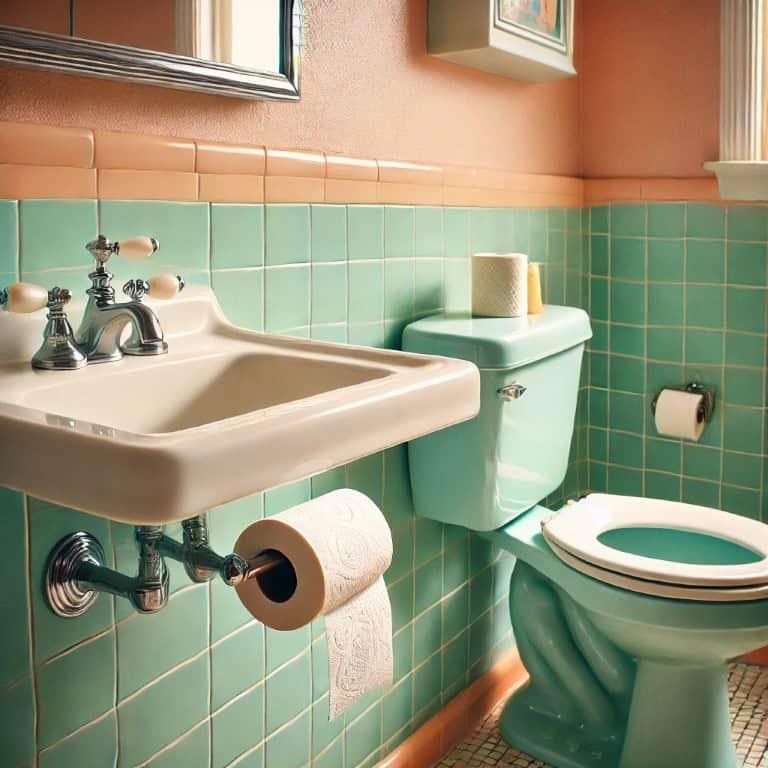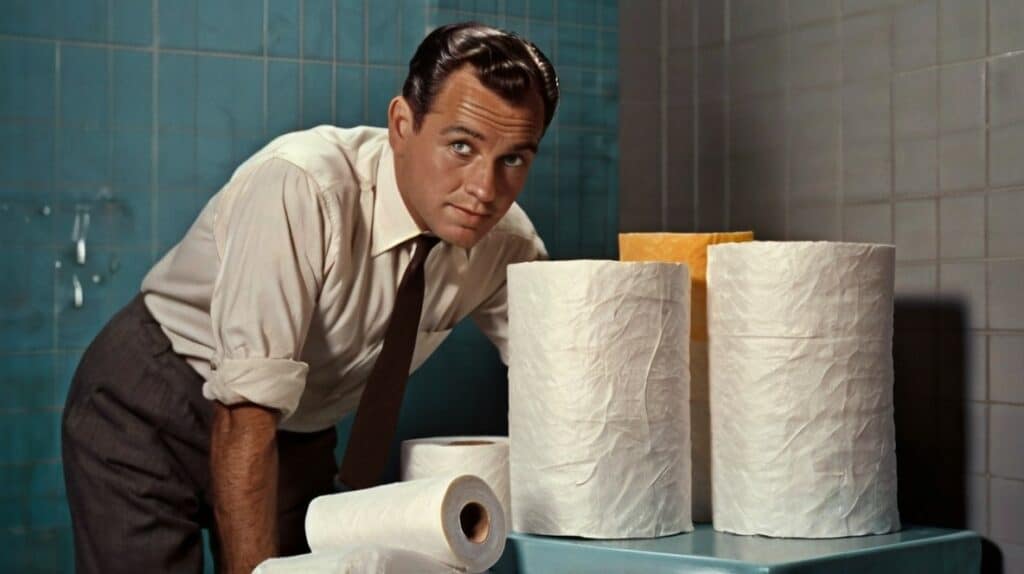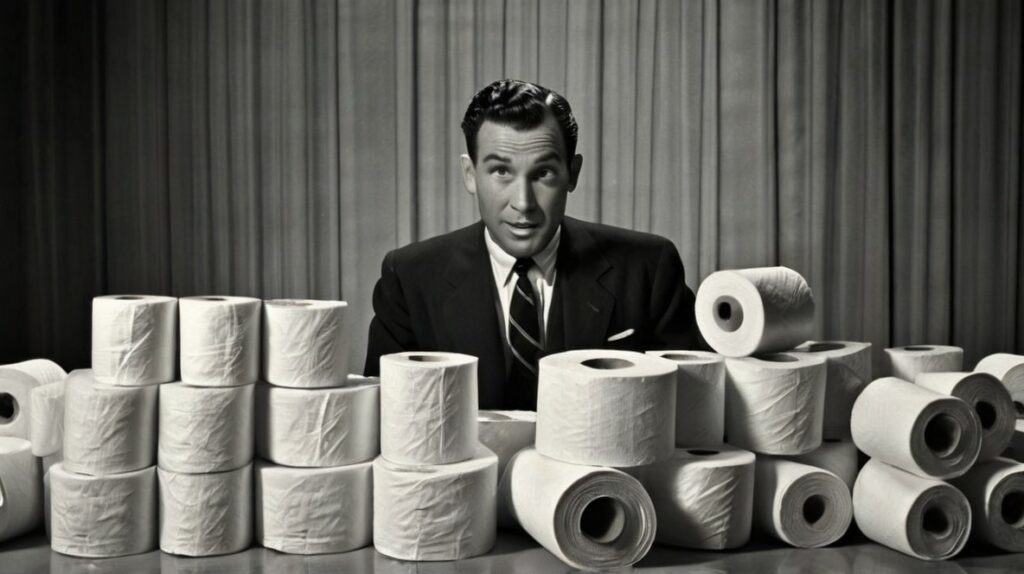The 1950s marked a turning point in many aspects of American life, including how toilet paper was consumed. The post-war economic boom, coupled with changing lifestyles, led to an unprecedented rise in toilet paper consumption during this decade. This increase wasn’t just a matter of practicality; it was a reflection of broader societal shifts that characterized the era.
The Economic Boom and Its Impact on Toilet Paper Consumption
The end of World War II ushered in a period of remarkable economic growth in the United States. Families were bringing home bigger paychecks, and for the first time in decades, there was a widespread sense of financial security. This surge in disposable income meant that Americans were spending more on household goods, including toilet paper.
With more money to spend, consumers began demanding higher quality products. The toilet paper industry responded by offering softer, stronger, and more absorbent options. Brands like Charmin and Scott became household names, thanks to aggressive marketing campaigns that emphasized comfort and luxury—qualities that resonated with the newly prosperous American family.
The Suburban Boom and Its Influence
During the 1950s, millions of Americans moved to the suburbs, seeking the idealized version of the American Dream. New homes meant new bathrooms, and new bathrooms meant a need for more household essentials, including toilet paper. The construction of these suburban homes included larger bathrooms, which, in turn, led to an increase in the storage space for bathroom supplies. This shift also influenced how much toilet paper was consumed, as families stocked up on larger quantities to fill these new spaces.
The Baby Boom and Increased Household Demand
Another significant factor driving the rise in toilet paper consumption was the Baby Boom. Between 1946 and 1964, the birth rate in the United States skyrocketed, resulting in larger families. More people in the home naturally led to an increase in daily household needs, including the demand for toilet paper.
As families grew, so did the need for convenience. Parents of the 1950s were busier than ever, and the idea of running out of essential items like toilet paper became unacceptable. This need for convenience spurred the popularity of bulk purchasing, and toilet paper manufacturers were quick to capitalize on this trend by offering multi-roll packages.
Marketing and the Rise of Brand Loyalty
The 1950s were a golden age for advertising, and toilet paper brands were no exception to this trend. Companies invested heavily in print, radio, and television ads to persuade consumers that their brand of toilet paper was the best choice. Advertisements focused on qualities like softness, strength, and even the emotional comfort associated with using a particular brand.
One of the most iconic campaigns of the era was Charmin’s “Please Don’t Squeeze the Charmin,” which debuted in the early 1960s but had its roots in the 1950s marketing strategies. This campaign played on the notion that Charmin was so soft and irresistible that people couldn’t help but squeeze it—a message that resonated with consumers who equated softness with luxury.
Brand Loyalty and Consumer Habits
With the increase in advertising came a corresponding rise in brand loyalty. Consumers began to associate specific brands with quality and comfort, leading to a preference for certain types of toilet paper. This loyalty was passed down through generations, as parents recommended the same brands they used to their children.
The 1950s also saw the introduction of “luxury” toilet paper brands. These brands were marketed as being superior in quality, often with a higher price point to match. Consumers, flush with post-war prosperity, were willing to pay more for these premium products, further driving the increase in toilet paper consumption.
Innovations in Toilet Paper Production
The 1950s were a decade of innovation, and the toilet paper industry was no different. Advances in manufacturing technology allowed for the production of softer, stronger, and more absorbent toilet paper. For the first time, two-ply toilet paper became widely available, offering consumers a product that was not only functional but also luxurious.
Manufacturers also began experimenting with different textures and materials to create a product that was both gentle on the skin and effective in use. These innovations were driven by consumer demand for higher-quality products, as well as by the competitive nature of the market.
The Introduction of Perforated Rolls
Another significant innovation during the 1950s was the widespread adoption of perforated toilet paper rolls. While perforated rolls had been around since the late 19th century, it wasn’t until the 1950s that they became the industry standard. This change made toilet paper more convenient to use and helped to standardize the size of toilet paper sheets, which, in turn, influenced consumption patterns.
The Role of Culture and Hygiene in Toilet Paper Consumption
The 1950s were a time of significant cultural change, and this was reflected in attitudes toward hygiene. The rise of suburban living brought with it a new emphasis on cleanliness and personal care. Bathrooms became more than just functional spaces; they were now seen as a reflection of a family’s values and status.
This cultural shift was mirrored in the way toilet paper was marketed. Advertisements began to emphasize the importance of hygiene and cleanliness, positioning toilet paper as an essential part of daily life. The message was clear: using high-quality toilet paper was not just about comfort; it was about maintaining a clean and healthy home.
The Influence of Television
Television played a crucial role in shaping consumer behavior in the 1950s. As the medium became more widespread, it brought with it a new form of advertising that was more engaging and persuasive than traditional print ads. Toilet paper brands took advantage of this by creating commercials that not only showcased their products but also tapped into the cultural values of the time.
These commercials often featured idyllic suburban families who epitomized the American Dream. The implication was that these families used the best products, including high-quality toilet paper. This association between toilet paper and the idealized version of family life further drove the rise in consumption.
Gender Roles and Household Management
Gender roles in the 1950s also played a part in the increased consumption of toilet paper. Women were typically responsible for managing the household, including the purchase of everyday essentials like toilet paper. Advertisers recognized this and tailored their messages to appeal to the modern housewife.
Commercials and print ads often featured women who took pride in keeping a clean and well-stocked home. The availability of high-quality toilet paper was portrayed as a reflection of a woman’s ability to care for her family, reinforcing the idea that purchasing the best brands was an essential part of household management.
Toilet Paper as a Status Symbol
In the 1950s, softness became a key selling point for toilet paper. Manufacturers introduced new products that were softer than ever before, and this quality was heavily promoted in advertising. The softness of toilet paper became a symbol of luxury, and consumers were willing to pay a premium for it.
The association between softness and status was further reinforced by the packaging of toilet paper. Brands began to offer toilet paper in attractive packaging that featured elegant designs and vibrant colors. This packaging was designed to appeal to consumers who wanted their bathroom products to reflect their newfound prosperity and taste.
The Influence of Celebrity Endorsements
The 1950s saw the rise of celebrity endorsements in advertising, and toilet paper was no exception. Celebrities were used to promote a wide range of products, including household essentials like toilet paper. These endorsements added an element of glamour to the product and further reinforced its status as a symbol of luxury.
Celebrities who endorsed toilet paper often appeared in commercials that highlighted the product’s softness and quality. These endorsements were effective in persuading consumers that the best products were those used by the stars, leading to an increase in brand loyalty and consumption.
The Environmental Impact of Increased Consumption
The rise in toilet paper consumption during the 1950s had a significant impact on the environment. As demand for toilet paper grew, so did the need for the raw materials used to produce it. Pulp and paper mills expanded their operations to keep up with the increasing demand, leading to deforestation and other environmental concerns.
During this period, little attention was paid to the environmental impact of toilet paper production. The focus was on meeting consumer demand and maintaining high production levels. It wasn’t until later decades that the environmental consequences of this increased consumption began to be recognized.
Today, consumers prefer choosing non-toxic toilet paper options made from recycled materials or bamboo shopping on Amazon or on websites like Seek Bamboo. These alternatives are biodegradable and free from harmful chemicals, offering a more environmentally friendly choice while maintaining comfort and quality.
Waste and Landfill Issues
Another environmental issue related to the rise in toilet paper consumption was waste. The increased use of toilet paper led to a corresponding increase in the amount of waste generated. Much of this waste ended up in landfills, where it contributed to the growing problem of solid waste management.
In the 1950s, there was little awareness of the long-term environmental impact of this waste. The focus was on convenience and consumer satisfaction, with little regard for the potential consequences of increased consumption.
By the time the 1950s came to a close, toilet paper consumption had reached new heights, reflecting the broader societal changes that characterized the decade. The economic boom, the rise of suburban living, and the influence of advertising all played a role in revolutionizing how Americans viewed and used toilet paper. These shifts not only transformed the toilet paper industry but also left a lasting impact on consumer behavior and environmental sustainability.
